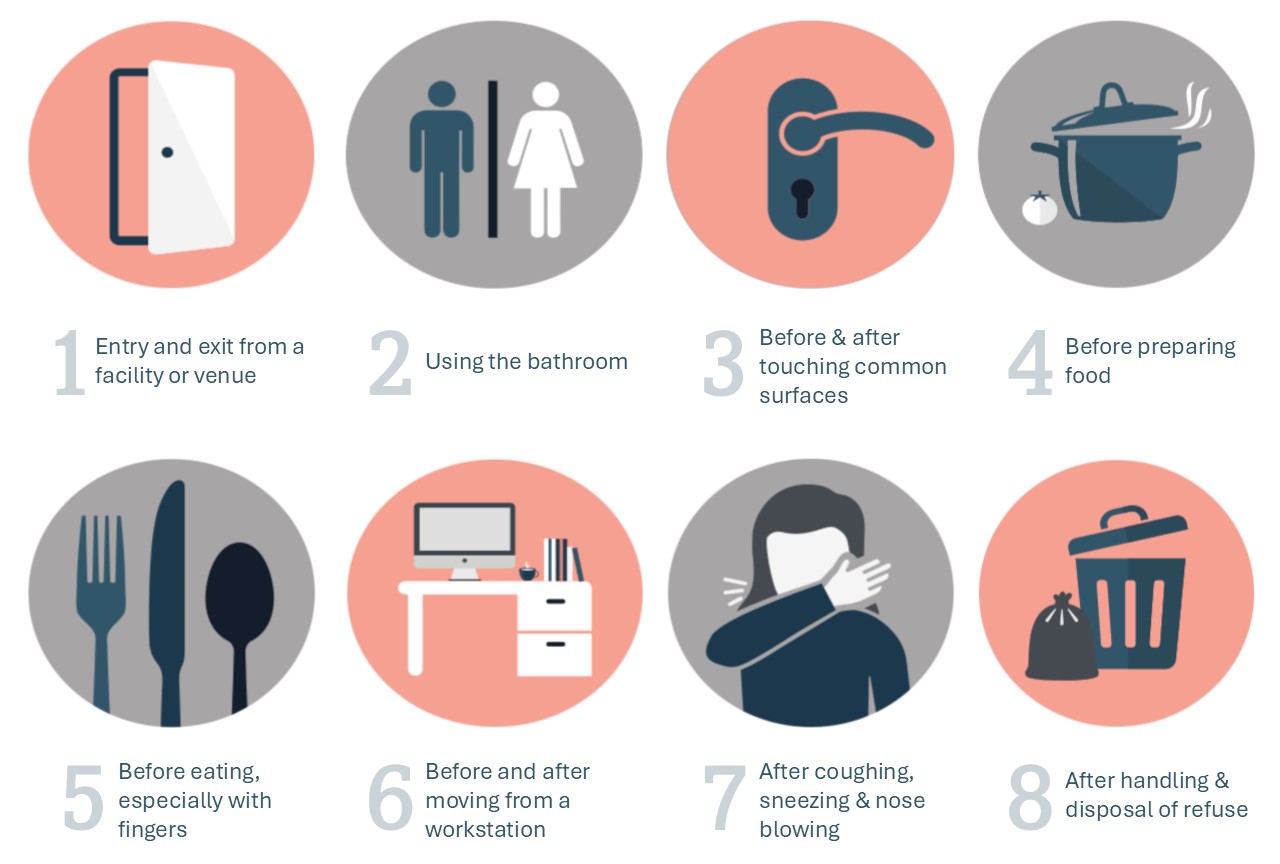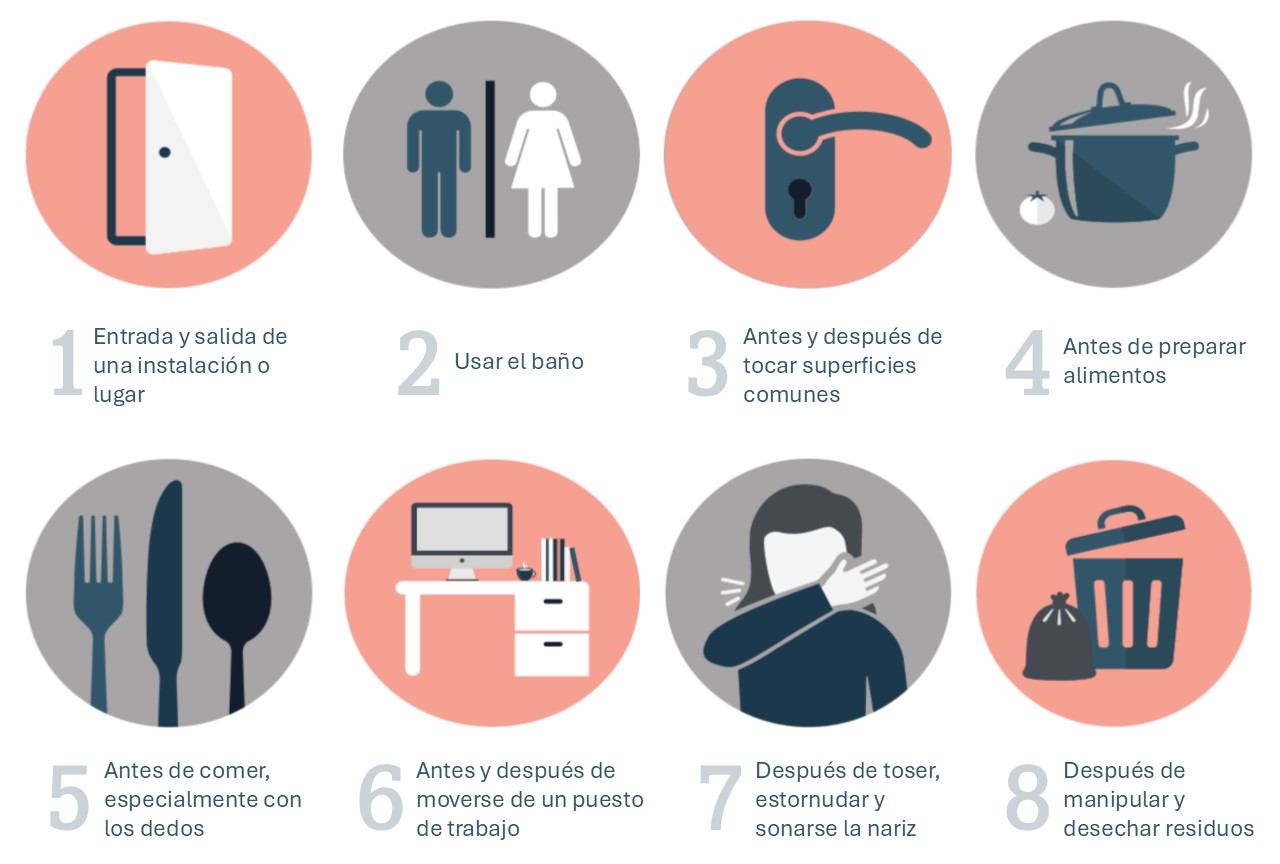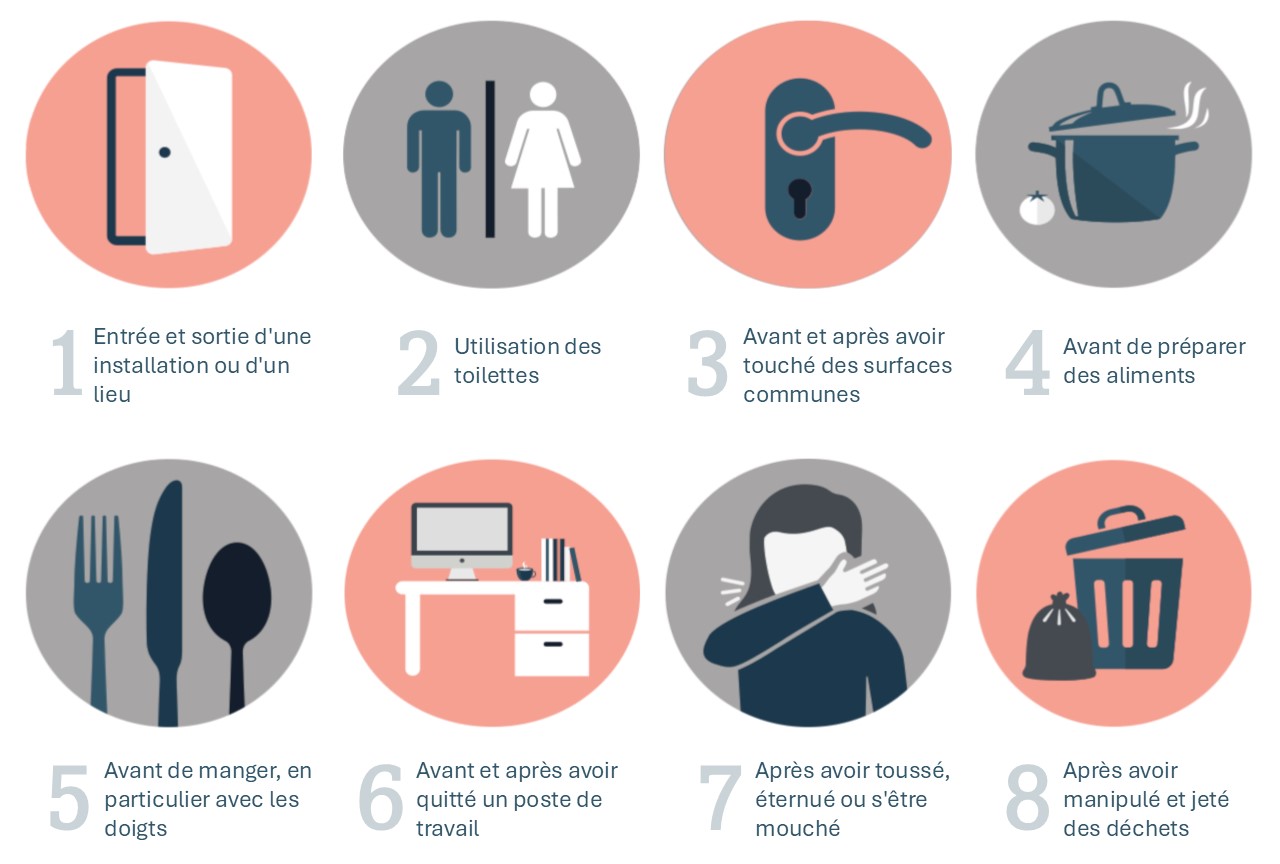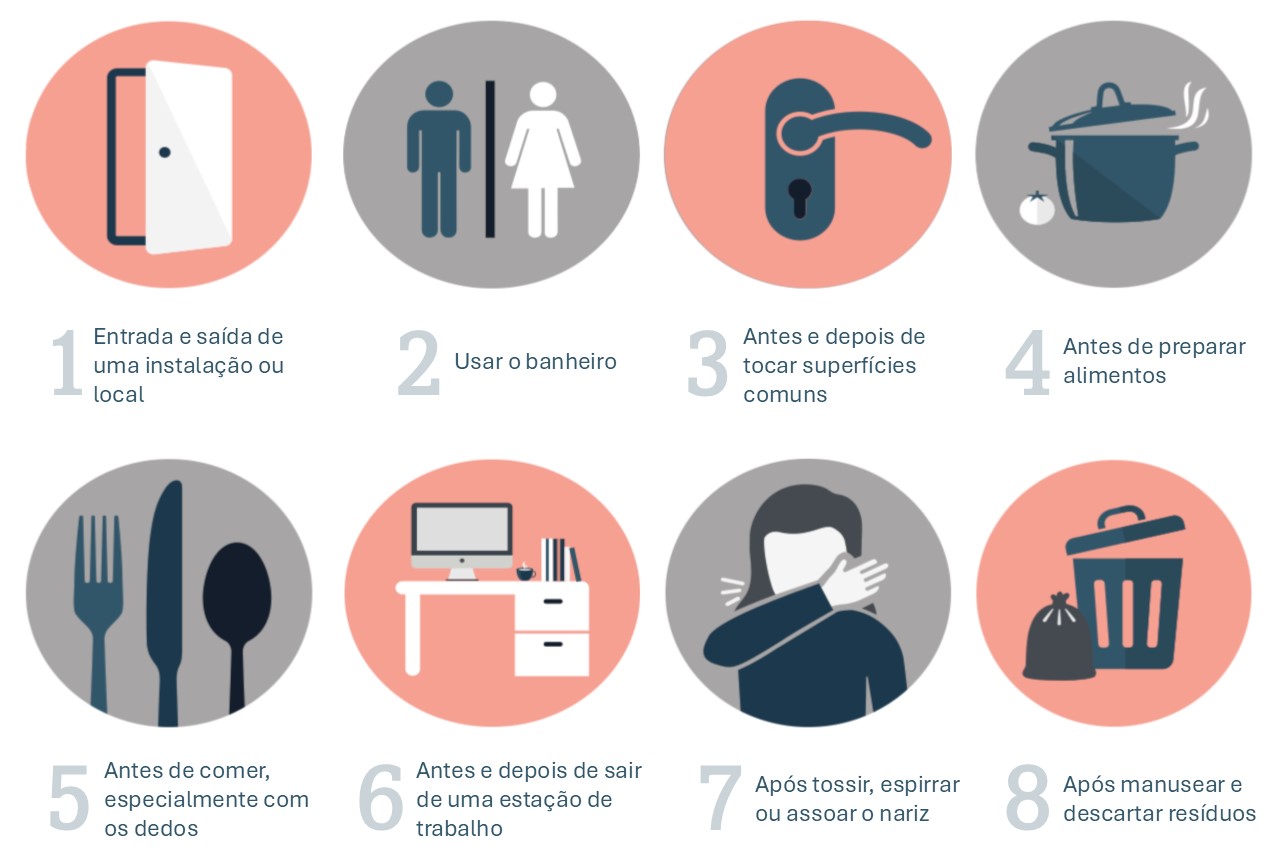Learn More: This page is based on the IFH guideline, 8 Moments for Targeted Hygiene: Guidance for Public Places and Workplaces. Visit the guide for comprehensive insights into creating safer public and workplace environments through Targeted Hygiene.
A Healthy Workplace: Minimizing Illnesses and Maximizing Productivity
Workplaces are ideal environments for the spread of common illnesses, including respiratory infections (e.g., colds, influenza, COVID-19), gastrointestinal illnesses (e.g., norovirus), and other contagious diseases. These infections have significant impacts on businesses, including:
- Economic Impact: In the U.S., acute respiratory infections (both influenza and non-influenza ARIs) account for an estimated $127 billion in annual costs, including healthcare expenses and lost productivity.
- Workflow Disruption: Presenteeism, where employees work despite being sick, can reduce individual productivity by an estimated 30% or more and impair overall performance. When combined with absenteeism, the resulting effects on teams and timelines increase organizational costs.
- Health Risks: Contagion in shared spaces can increase the likelihood of outbreaks, exposing employees and visitors to illnesses such as colds, influenza, norovirus, or even more severe diseases. These risks can lead to cascading effects on well-being, morale, and productivity.
Office environments, with shared equipment and high-contact surfaces like desks, keyboards, and break rooms, are hotspots for pathogen transmission. Viral particles from infected individuals can contaminate surfaces for hours or even days, facilitating further spread through hands and shared spaces.
While vaccines can help prevent some illnesses, many pathogens, including norovirus, lack vaccines. This highlights the critical importance of hygiene interventions like the 8 Moments of Targeted Hygiene to break the chain of infection.
Your Checklist for Success
Transform your workplace into a healthier and more productive space. This checklist provides practical steps to identify key moments, ensure the right infrastructure, and promote hygiene behaviors that reduce the spread of illness.
| Risk Moments | Purpose | Actions for Facility Managers | Education for Individuals |
Entering the facility. Exiting the facility. | To prevent you contaminating the work environment. To protect you from contamination from others via surfaces. | Ensure access to hand washing facilities or hand sanitizer on entry and exit points. | Wash hands with soap & water or use a suitable hand sanitizer if washing facilities are not available. |
Before leaving your workstation. After returning to your workstation. | To prevent you contaminating the environment. To protect you from contamination from others picked up from hand contact surfaces. | Ensure access to hand sanitizers at all workstations. | Sanitize your hands before leaving your workstation. Sanitize your hands when returning to your workstation. |
| Touching surfaces frequently touched by other people (e.g., door handles, stair rails, grab handles, turnstiles, barriers, ticket machines, etc.). | To prevent you from spreading infection to others. To protect you from getting infected. | Provision of hand sanitizer at internal doors, elevators, staircase exits and other identified common touch points. Daily disinfection of frequently touched surfaces. | Avoid touching common surfaces where possible. Wash hands with soap and water or use a suitable hand sanitizer immediately after touching. Minimize touching your face |
| Food preparation (for employees in food service establishments). | To protect you from foodborne infection and food from contamination by you. To protect food from contamination. | Ensure access to correctly placed hand washing facilities or hand sanitizer. Ensure food preparation areas and utensils are frequently disinfected. | Wash with soap and water or use a suitable hand sanitizer, immediately after handling raw food. Sanitize ALL food contact surfaces after preparing raw foods and before “preparing” ready to eat foods e.g., sandwiches. Utensils and cleaning cloths are also critical surfaces at this moment |
| Before eating food, especially with fingers. | To protect you from infection. | Ensure hand washing facilities with reminders for users. Ensure that food is consumed in a safe area and that there is access to hand sanitizer. | Wash hands with soap and water or use a suitable hand sanitizer immediately before eating. |
| Using the restroom. | To prevent self infection and transmission of infection from you to others who use the restroom. | Ensure hand washing facilities with reminders for users. Frequently disinfect hand contact surfaces. | Wash hands with soap and water immediately after using the restroom. Disinfect hand contact surfaces using disinfectant wipes. |
| Coughing, sneezing, nose blowing and face touching. | To prevent transmission of infection from you to others | Ensure access to hand sanitizer at workstations. Ensure safe disposal facilities and remove safely from workplace. | Cough or sneeze into a tissue or fold of your arm. Wash hands with soap and water or use a suitable hand sanitizer immediately after coughing, sneezing or blowing your nose. Dispose of tissues in a suitable waste container. |
| Handling and disposing of waste. | To prevent transmission of infection from waste to you and other surfaces. | Ensure hand washing facilities with reminders for users. | Wash hands with soap and water or use a suitable hand sanitizer immediately after handling waste. |





